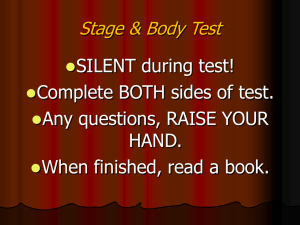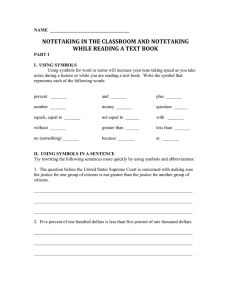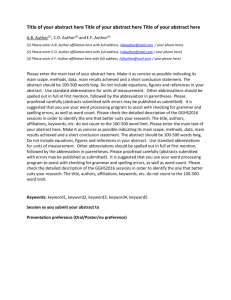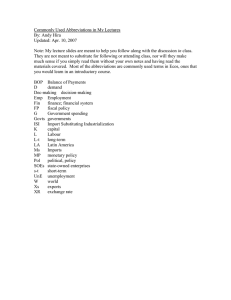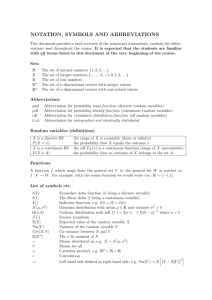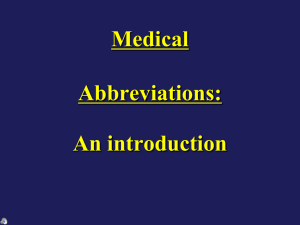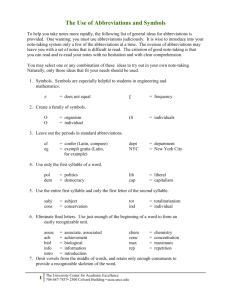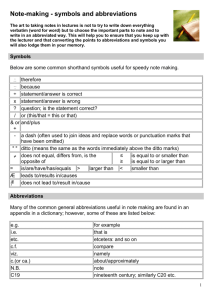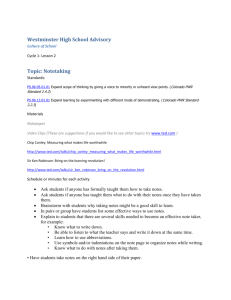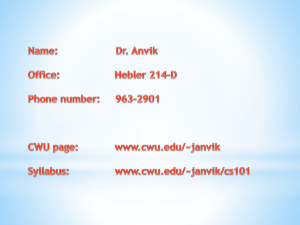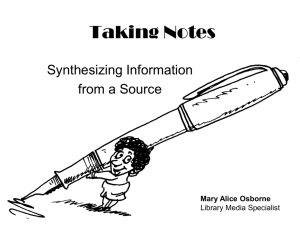Helpful abbreviations for speedy note
advertisement
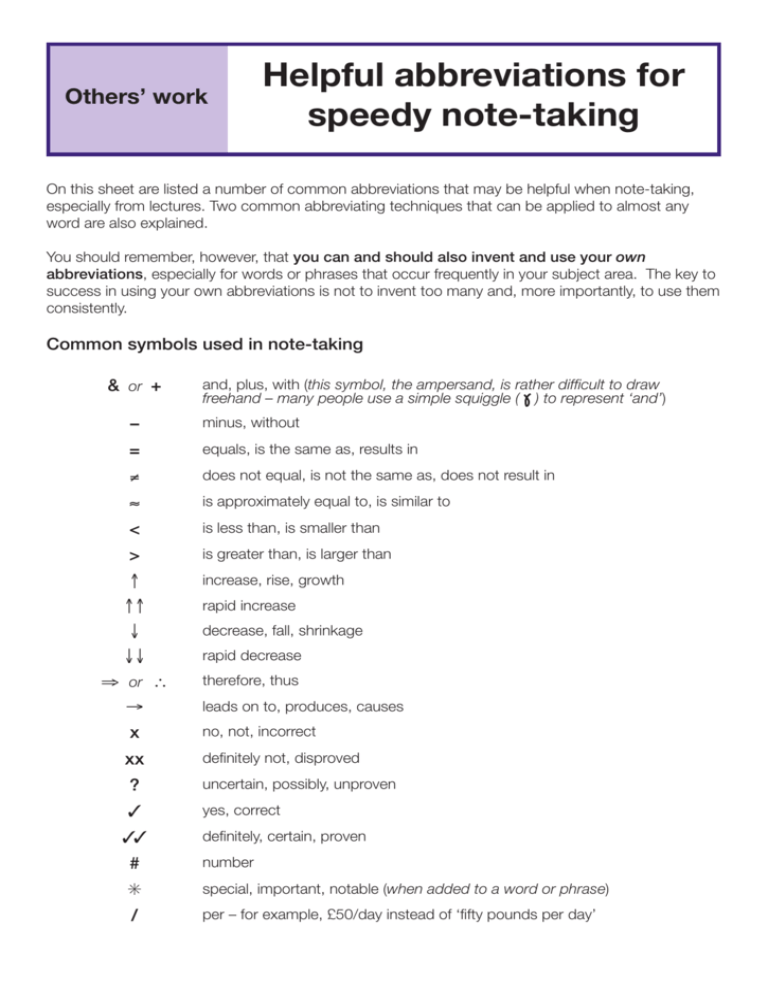
Others’ work Helpful abbreviations for speedy note-taking On this sheet are listed a number of common abbreviations that may be helpful when note-taking, especially from lectures. Two common abbreviating techniques that can be applied to almost any word are also explained. You should remember, however, that you can and should also invent and use your own abbreviations, especially for words or phrases that occur frequently in your subject area. The key to success in using your own abbreviations is not to invent too many and, more importantly, to use them consistently. Common symbols used in note-taking & or + and, plus, with (this symbol, the ampersand, is rather difficult to draw freehand – many people use a simple squiggle ( ) to represent ‘and’) – minus, without = equals, is the same as, results in ≠ does not equal, is not the same as, does not result in ≈ is approximately equal to, is similar to < is less than, is smaller than > is greater than, is larger than ↑ increase, rise, growth ↑↑ ↓ rapid increase decrease, fall, shrinkage ↓↓ rapid decrease ⇒ or ∴ therefore, thus → leads on to, produces, causes x no, not, incorrect xx definitely not, disproved ? uncertain, possibly, unproven ✓ yes, correct ✓✓ definitely, certain, proven # number ✳ special, important, notable (when added to a word or phrase) / per – for example, £50/day instead of ‘fifty pounds per day’ Some common general abbreviations c. approximately, roughly, about (abbreviation for the Latin ‘circa’) e.g. for example i.e. in other words (usually used when adding more detail or an explanation) cf. compared to, by comparison with w/ with w/o without v. very vv. extremely C century (e.g. C19 for ‘nineteenth century’) etc. K or k and so on a thousand (e.g. 500K for ‘five hundred thousand’) m a million (e.g. $6m for ‘six million dollars’) vs. against Two abbreviation techniques 1 Use the first few letters of the word – just enough to remember what the abbreviation stands for e.g. imp for ‘important’ info for ‘information’ eval for ‘evaluation’ 2 Remove all (or most of) the vowels from the word and use just the key consonants bunched together e.g. mngmt for ‘management’ mkt for ‘market’ (and mkting for ‘marketing’) dvpt for ‘development’ An example of the use of symbols and abbreviations to take efficient notes Imagine you heard the following in a lecture: The United Kingdom’s population, at around sixty million, is similar to that of Italy, but Italy’s population is now shrinking because its birth rate has fallen below its death rate. The UK’s population is still growing, albeit very slowly – at a rate of 0.09% between 1995 and 2000. Your notes on this part of the lecture might look like this: UK pop c60m ≈ I. BUT I. ↓ due BR < DR – cf. UK ↑ slow ie 0.09% 95 – 2K Martin Hampton e-mail: academicskills@port.ac.uk www.port.ac.uk/ask 09/15 DCQE Department for Curriculum and Quality Enhancement

